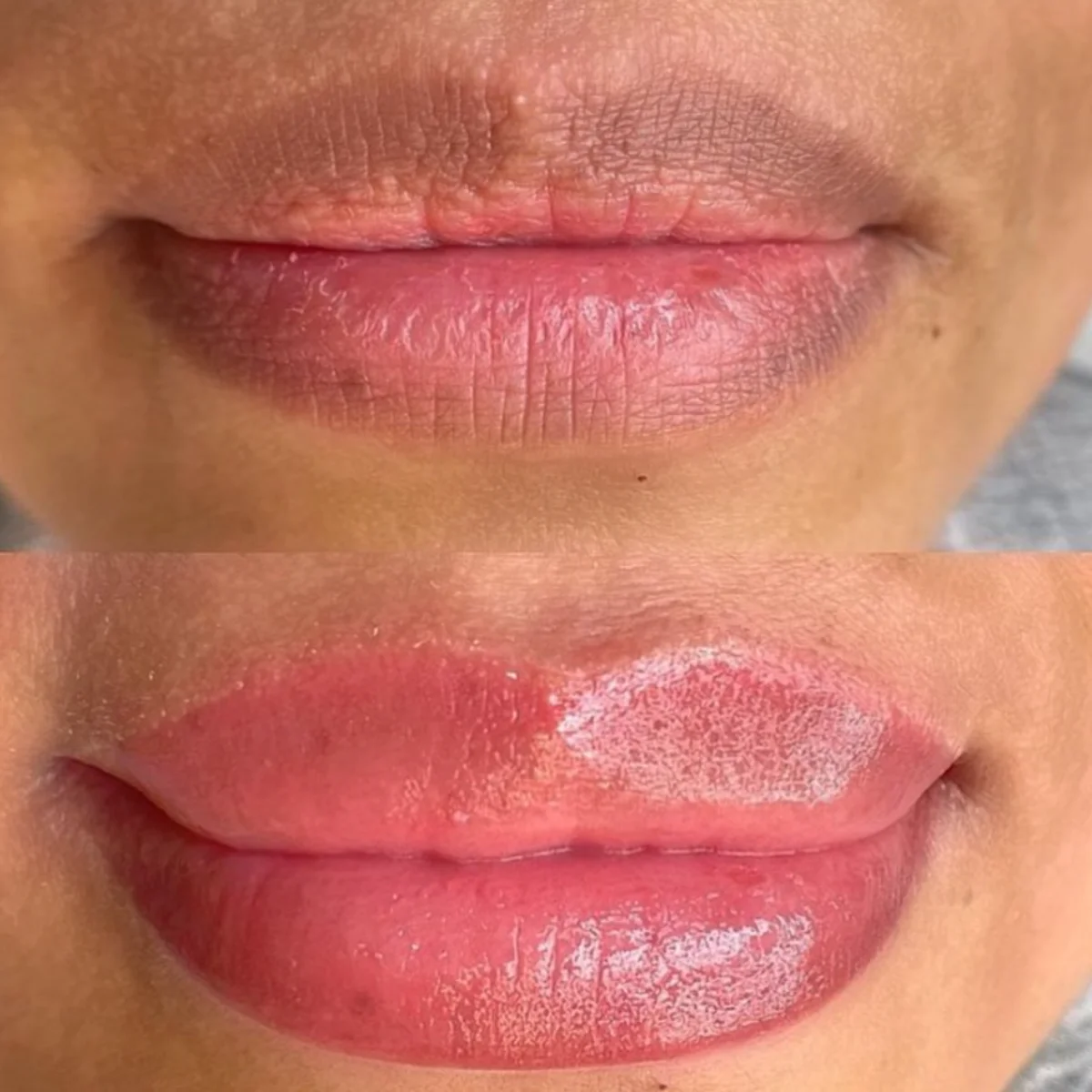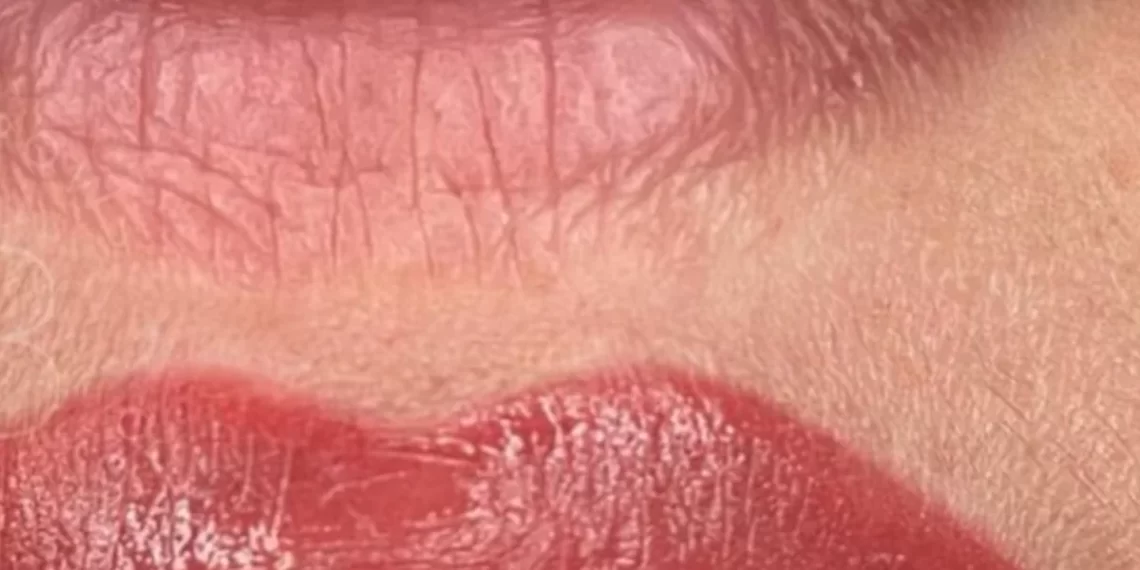Lip Blush Color
Semi-permanent lip blush tattoos provide a long-lasting solution for fuller lips, as the pigment is deposited into the top layer of skin to add colour, correct shape, and create the appearance of more volume.
Choose the perfect lip blush colour for your lips
By choosing the right colour, lip blush Melbourne can help women enhance the attractiveness and shape of their lips. A qualified professional can use colour theory to correct lip colour and shape.
The choice of pigment colour is crucial for the quality and aesthetic outcome of the procedure and should be selected thoughtfully and carefully.
The choice of lip blush colour is influenced by multiple factors, including the client’s appearance, lip and face shape, age, occupation, and current fashion trends. Selecting the right pigment colour through various tattoo techniques is essential for the artist to achieve the desired results.
- Lip volume enhancement is desired.
- Adjust the shape of the lips.
- This product helps conceal any variation in the lips’ natural pigment and provides a consistent colour.
- Applying makeup to conceal scars on the lips.
- Neutralizing the melanin
Expectations
Before and during the lip enhancement procedure, we apply a numbing agent to the lips. Nonetheless, a slight sensation may persist, which should be manageable.
It’s normal to experience swelling immediately after the procedure; this should subside within a few hours.
Seeing brighter hues, such as wearing red lipstick in the initial days post-treatment, is perfectly ordinary.
Once the peeling phase concludes, the lips might appear exceptionally pale and possibly uneven. There’s no cause for concern! The colour will gradually become more apparent and uniform over 4 to 7 weeks.
For those with melanin-rich lips, hyperpigmentation (darker appearance) or hypopigmentation (lighter patches) may occur. Rest assured, the melanin and the pigment will blend seamlessly over the next 7 to 8 weeks. Depending on the original darkness of the lips, a third session might be necessary.
Test out makeup
The artist uses various pigment colours to achieve the desired appearance. With a wide range of lip shades and colours available nowadays, it is possible to create stunning looks that convey naturalness, romance, and sex appeal.
Artists can mix colours and create a colour swatch that can be applied to your lips by combining with clear lip gel.
When getting a lip blush Melbourne procedure, it is recommended to trust the Artist’s choice of colour to prevent potential disappointment from selecting the wrong shade.
A permanent makeup specialist undergoes training in colour theory, studying the selection and effects of pigments on different skin types over time. This knowledge helps them to choose the most suitable pigment for each client.
Your skin undertones
Undertone is the colour beneath your skin’s surface, while skin tone refers to the overall colour of your skin. There are three types of undertones: warm, calm, and neutral. Individuals with similar skin tones may exhibit varying undertones. Your skin tone can change with external factors, but your undertone remains constant. Knowing your undertone helps you choose flattering colours for makeup and clothing.
To determine your undertone, examine the veins on your wrist. If they appear blue, you likely have cooler undertones and may want to choose colours with cool pink undertones.
When choosing a tattoo colour, consider the colour of your veins. Light green veins pair well with warm yellow shades, while blue and green veins can work with any colour.
Another method to determine a client’s lip tone is to have them stretch their lower lip for a closer inspection of its colour.
Your skin shade
Experts in the field of aesthetic tattooing consider various factors when choosing colours for tattoos, with the colour type of the client being a key consideration.
Shade by Season
Colour types of appearance in aesthetic cosmetology are often associated with seasonal changes.
“Spring”
Individuals with thin, translucent skin typically have blond hair, warm shades of blond, light grey or blue eyes, light eyebrow colour, and wear warm hues of orange, peach, beige, apricot, soft ocher, and salmon.
“Summer”
Individuals with light skin often have marble-like complexion and light pink undertones. They usually have blond hair in warm shades, along with light grey, grey-green, or grey-blue eyes. Their hair is blond, while their eyebrows are light brown. They look best in cold shades of pink and peach.
“Winter”
Typical physical characteristics include porcelain-white skin, dark brown hair, green or dark brown eyes, dark eyebrows, and saturated shades of red, ocher, and plum.
“Fall”
The individual has a skin tone that is rich and creamy, hair shades ranging from copper to bright red, and eyes in warm shades of green, amber, light brown, bronze, and dark eyebrows in various shades such as ocher, red pumpkin, brown, and plum.

Traditional shades
Pale skin
Nude tones such as peachy or cool pink are recommended for pale skin, while dark shades like brown or burgundy should be avoided as they may contrast too much.
Pink undertones
Peach tones are recommended for a natural look for those with pale to olive skin with pink undertones. Consider brick red or orange-based reds and darker, warm reds for a bolder look. It is advisable to steer clear of blue-based reds, as they may further cool down the skin, resulting in a purple hue.
Yellow undertones
Cold-based reds and bronzes are the recommended lip colours for skin tones ranging from olive to pale with yellow undertones.
Light Asian skin
Natural coral tones or bold reds are recommended to complement light Asian skin.
Dark Asian Skin
Individuals with darker or Southern Asian skin may struggle to choose a lip colour due to natural blue subtones. To achieve the desired shade, neutralizing cool tones may be necessary.
Dark skin
Individuals with dark complexions may find that coral shades or lip colours with orange and red tones are flattering. Avoiding nude tones with a high concentration of white pigment is suggested, as this may result in a chalky appearance on the lips.
Can specific colours make lips look bigger?
Warmer and more delicate colour tones are typically recommended for achieving a natural lipstick effect, while cold shades can create the appearance of more volume on the lips for women.
It is essential to consider that cold-tone pigments are most flattering for individuals with a calm skin tone.
Lip colour can fade due to various reasons such as age, smoking habits, or natural lightness. Adding colour to pale lips can help shape and add volume to them.
Do lip blush colours last differently?
Two types of pigment are used in lip tattooing: mineral non-organic and synthetic organic. Mineral non-organic colours fade faster, while synthetic organic pigments last longer and have vibrant colours. Organic colours are brighter and bolder, making them popular for lip pigments. Inorganic pigments, made of iron and oxygen, are stable, inert, and non-toxic. Many artists prefer synthetic organic pigments for lip tattooing because of their longevity and vibrant colours.
Organic pigments are known for their bright, pure colours and lightweight properties, while inorganic pigments are typically opaque minerals containing metals.
Organic pigments have historically been sourced from natural materials, but inorganic and synthetic organic pigments are now more commonly utilized. Synthetic organic pigments are produced from coal tars and petrochemicals.

